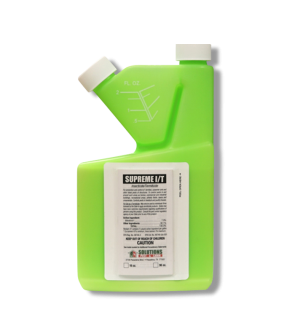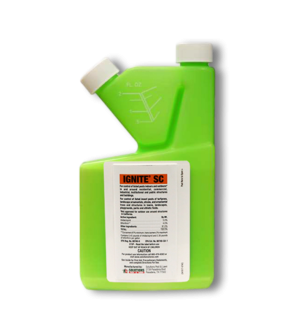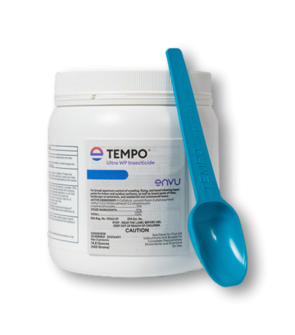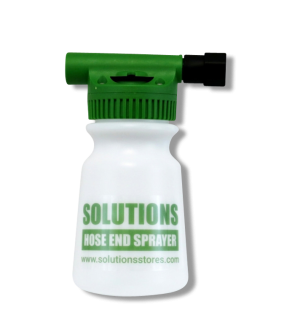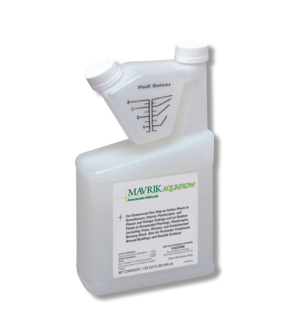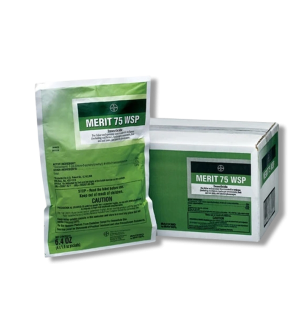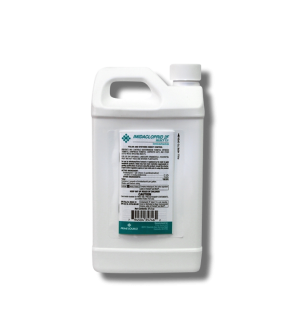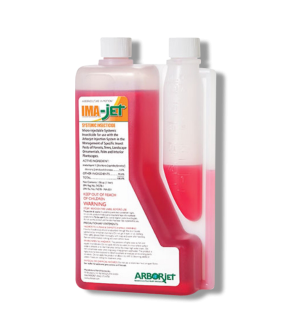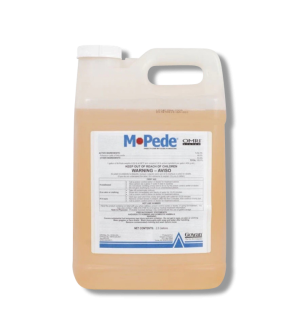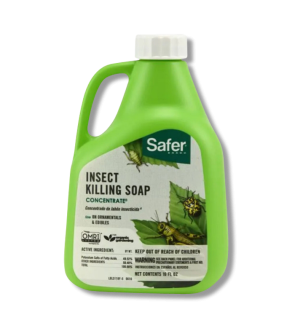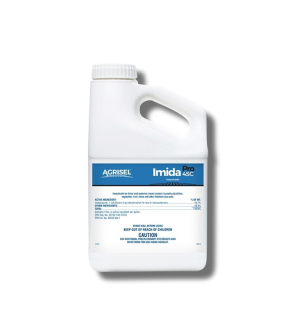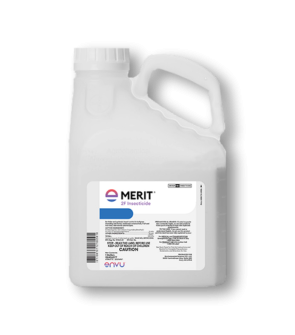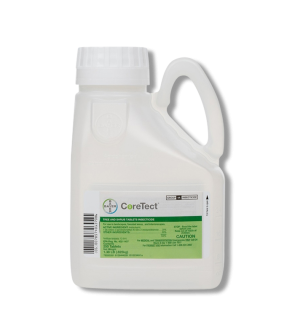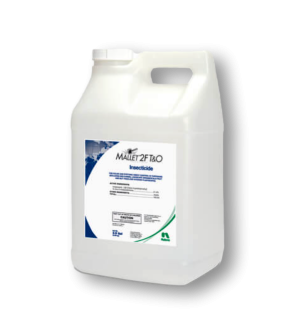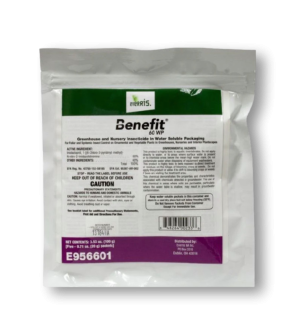Gain access to personalized product screening, the best pricing, rewards, and more!
Most Effective Products
Psyllid Control: How to Get Rid of Psyllids
This page is a general psyllid control guide. Using the products and methods suggested, you will get control of psyllids infesting your property. Follow this DIY guide and use the recommended products; we guarantee complete control of present and future infestations of psyllids.
A tiny insect homeowners may encounter in their outdoor foliage is the psyllid, more commonly referred to as jumping plant lice. As suggested by its name, this pest uses its powerful hind legs to jump and fly across short distances. To travel great distances, the psyllid normally latches itself into the cracks and crevices of plant bark, leaves of field-grown container plants, or food such as pears.
Though this pest infestation is uncommon, it is not unnoticed throughout the United States due to the export of fruits and other plants from foreign countries. While there are 160 types of species, the psyllid can range between two feeding types: monophagous, meaning psyllids feast on one type of plants, or oligophagous, feeding on two or more related plant species. Regardless of their feeding style, the psyllid should be regarded as a serious pest since these pests possess toxic saliva and can form large groups to suck the nutrients out of desired plant tissue.
In small numbers, the psyllid does not pose much of a threat to gardens and foliage. However, in as little as three weeks, this pest completes its life cycle and reproduces up to 800 eggs once per generation during the spring and summer months. Follow our DIY treatment guide to learn more about this sap-sucking pest and how to best remove it from your yard using the recommended steps and products.
Identification
Before you can proceed with a treatment program, you must be certain that the pest infesting your property is a psyllid species. Due to the numerous species, this section will focus on the general characteristics of psyllids. Refer to the following characteristics to identify psyllids.

- Psyllids are tiny, sap-sucking insects that measure between 1/12 to 1/5 inch of an inch, with oval or slightly humpbacked oval-shaped bodies, and short segmented antennae. Their eyes are prominent and usually dark or reddish. Cicadas, a pest they are commonly mistaken for, are much larger insects, ranging from about 2.5 to 7.5 centimeters (1 to 3 inches) in length.
- During their adult stage, their transparent wings are held in a roofline position. Young psyllids are more prone to jumping, whereas older psyllids fly.
- They normally are tan in color but can darken to reddish brown as they mature. In the nymph stage, they are pink, green, and yellow.
- Psyllids possess a tubular-shaped sucking mouthpart to penetrant plant tissue.
- Eggs are orange to yellow, 0.3 mm long, and appear football-shaped.
- It’s important to distinguish psyllids from similar-looking psocids, as different pests may require different approaches to treatment. Psocids are harmless insects that feed on fungi. They have more narrow necks, creating a more distinct separation from the head and thorax.
Use the image and description above to identify psyllids on your property properly. If unsure, contact us with a photo or sample of your pest by phone, email, or in person at one of our store locations.
Inspection
Once you have confirmed that you are facing an infestation of psyllids, you will need to locate the areas and plant types they are infesting. Conducting an inspection will help you determine where to focus insecticide applications and the type of product to use. Careless identification can lead to using the wrong treatment approach and product, which can cost you time and money.

Where to Inspect
Begin by examining aesthetic damages on the leaves, stems, and bark of crops (pears, sweet potatoes, tomatoes, peppers), ornamental plants, trees (acacia, eucalyptus, citrus), and shrubs (Grecian laurel) within your garden and landscape.
What to Look For
As a warm-dependent pest, the psyllid absorbs the juices out of plant leaves with their piercing mouthparts, then leaves honeydew on which sooty black mold usually grows throughout the spring and summer seasons.
Depending on the species, they can also leave behind pale or white wax masses, pellets, strands, or coverings called lerps (made from wax and honeydew). From their feeding activity, this causes leaves to turn yellow, burn at the top of leaves, and holes to develop, curl, and die.
In the first half of spring and summer, psyllids deposit their eggs in the cracks and crevices of plant buds, between plant leaves, tips of new shoot growth, or horizontally along the leaf's axis to the surface. During winter, psyllids overwinter in the cracks and crevices of tree bark and trunks, causing slight discoloration or loss of leaves around the area.
Treatment
Once you have confirmed where psyllids are active, you can continue with insecticide applications. Remember to read the application sites on the product label and the plant species to treat, and stay safe before handling or applying any pesticide material by wearing the appropriate personal protective equipment (PPE).
A systemic insecticide like Ignite SC is ideal for controlling psyllids on general ornamental foliage because these pests feed by piercing plant tissues and sucking sap. So, a systemic product ensures the insect ingests the active ingredient directly, leading to more effective and longer-lasting control than contact sprays alone.
For edible crops, insecticides labeled for use on your specific crop species should be used.
Monterey Fruit Tree & Vegetable Systemic Soil Drench is a liquid insecticide containing imidacloprid that’s applied to the soil and absorbed through listed crop roots to protect from the inside out. It’s especially effective against psyllids because it delivers long-lasting, systemic control that targets these sap-sucking pests as they feed on treated foliage.
Step 1: Apply Ignite SC to Non-Bearing Fruit and Nut Trees and Ornamental Foliage

Only apply Ignite SC to the leaves, stems, and trunks of non-bearing fruit and nut trees, shrubs, ornamental trees, foliage plants, and lawns.
For use on ornamental plants: trees (including nonbearing fruit and nut trees), shrubs, evergreens, flowers, ground covers, bedding plants, and foliage plants, including plants in interior plantscapes.
Apply this product only to plants and shrubbery that are not grown for consumption.
Do not apply this product to plants that are flowering. Only apply after all flower petals have fallen off.
Do not harvest or consume fruit or nuts from any tree that has been treated within 1 year.
You will need to mix with water with a hose-end sprayer, backpack sprayer, or handheld pump sprayer. To cover larger areas and tree canopy heights, we suggest using the Solutions Hose End Sprayer.
For foliar applications on ornamentals, apply 6.7 to 21.3 fl. oz. of Ignite SC per 100 gallons of water.
Determine how much Ignite SC to use by measuring the square footage of the treatment site. To do this, measure the length and width of the treatment site in feet and multiply them together (length X width = square footage).
Ensure that your water hose pump and the control valve on the hose-end sprayer are turned off. Attach the empty hose-end sprayer to the end of your garden hose. Remove the reservoir from the nozzle to pour the required amount of Ignite SC. Fill the hose-end sprayer with enough water to treat the entire treatment site. Reattach the nozzle to the filled hose-end sprayer, and then turn the water hose on. Push forward the control valve switch on the hose-end sprayer until the material is released.
Spray the top and bottom of leaves until wet but not to the point of excessive run-off.
Keep children and pets off the treatment area until the spray has dried.
Step 2: Treat Listed Crops with Monterey Fruit Tree & Vegetable Drench
Monterey Fruit Tree & Vegetable Drench is for use on listed fruit and nut trees, including citrus, apple, peach, cherry, and plum; and on listed vegetables, including tomatoes, carrots, peppers, melons, cucumbers, herbs; and on listed berries including strawberries, raspberries, blueberries, and grapes.
Depending on the crop the application rate will vary. For this reason, its best to reference the label for specific application rates and restrictions.
We will provide an example on the most commonly infested foliage, which is citrus.
For citrus, Monterey Fruit Tree & Vegetable Systemic Soil Drench should be applied based on the distance from the trunk to the dripline (the edge of the tree’s canopy).
According to the label, if the dripline is 3 feet from the trunk, mix 1.5 ounces of product per 1 gallon of water.
For 4 feet, use 3 ounces per 1 gallon of water; for 5 feet, 5 ounces per 1 gallon of water; and for 6 feet, 7.5 ounces per gallon of water.
Once mixed, pour the solution evenly around the base of the tree within the dripline and water thoroughly to help the product absorb into the root zone.
This systemic application protects the entire plant from sap-feeding insects like psyllids, providing long-lasting, internal defense with just one yearly treatment.
Do not make more than 1 application per year.
Do not harvest citrus until 21 days after application. This will be different for each crop you treat, so you must check the label.
Prevention
Once psyllids are removed, you must implement preventative measures to exclude them from your property and eliminate the attractants that draw them to your foliage. Listed below are some preventative measures you can follow to control future psyllids infestations.
- Remove affected foliage leaves, stems, and branches to reduce potential psyllid egg hatch sites and stimulate plant growth.
- Mow turf when it has reached a height of 3 inches and trim back overgrown plant materials to disturb psyllid activity.
- Rake fallen leaves, tree bark, fruit, and branches to reduce moisture and shade in your property and deter psyllids from invading.
- You may use yellow sticky traps along the base of trees, but they must be off the ground, to prevent psyllids from climbing up and damaging the plant.
- Avoid overwatering by adjusting watering to once a week early in the morning with no more than an inch of irrigation.
- Lastly, reapply Ignite SC and Monterey Fruit Tree & Vegetable as directed on the product label for continued protection against psyllids.
Key Takeaways
What are Psyllids?
- Psyllids are small sucking pests that ingest the plant juices from foliage leaves or fruit, depending on the species.
How to Get Rid of Psyllids
- To control psyllids, we recommend using Ignite SC on your lawn and non-bearing fruit and nut trees, shrubs, and ornamental foliage. Apply Monterey Fruit Tree & Vegetable Drench on listed crops.
Preventing Psyllid Reinfestation
- Prevent psyllid infestations by continually applying Ignite SC and Monterey Free Tree & Vegetable Drench. Also, be sure to maintain continual health and maintenance of foliage.









